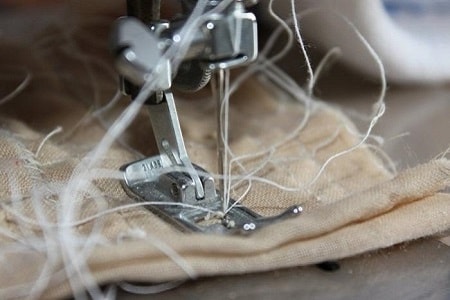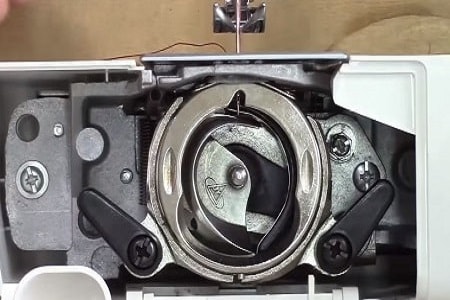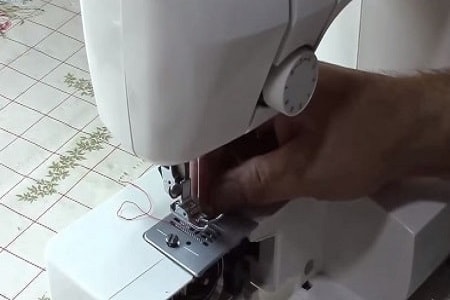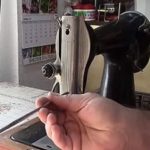Sewing machines do not lose their popularity even in the twenty-first century. Those born in the Soviet era remember that girls from childhood were taught to sew various things, starting with gloves, and ending with jackets and coats.
In the Soviet era, most people carried out repair of sewing machines on their own. Even today, those who attend cutting and sewing courses understand that it is better to repair a sewing machine on their own than to take it to a service center:
- Firstly, companies engaged in the repair of sewing machines require quite a lot of money from their customers for the services provided.
- Secondly, even modern machines can be figured out in a matter of hours, you just need to carefully approach this issue, and in the future it will allow repairing sewing machines without involving third parties.
![]() See also - How does a sewing machine work?
See also - How does a sewing machine work?
Basic rules for the operation of the sewing machine
Let's look at the basic rules for operating sewing machines:
- Sewing equipment should not be located near batteries or heaters. But at the same time, it should be in a dry room in which there are no signs of dampness;
- Before starting work, it is necessary to select the necessary materials and tools, needles and threads that will be needed in the process;
- Before you start sewing, you need to make sure that the needle and thread guide are in the upper position;
- Remember that the sewing machine needs to be helped at the time of sewing, pulling matter onto itself;
- After the sewing work is completed, you need to raise the presser foot and pull out the fabric. Next, cut the thread, having previously found at it a free end, the length of which will be a maximum of seven, but at least five centimeters.
Sewing machine problems
There are rules, and they must be followed. The use of high-quality materials and additional tools minimizes the occurrence of problems and malfunctions when working with sewing machines. Therefore, the following reasons, which entailed malfunctions, are the most common:
- Breakage of thread. Clipping can occur both the upper and lower threads. In the first case, the problem is associated with the selection of low-quality threads or the size of the needle is not correctly selected. In the second case, the problem of the malfunction of the sewing machine can be associated with irregularities, the presence of burrs of bobbins, and improper winding of the thread.
- Problems with tissue promotion. If such a problem occurs, you need to carefully look at the position of the teeth. If they are pulled up or lowered down, then it is required to bring them to a normal state;
- Cutting through tissue.If such a problem occurs, to fix the machine we need to reduce the pressure of the presser foot, and check the condition of the needle, it may be too dull.

Advice:
Read also: Repair a blender: disassemble and repair it yourself
Serious issue - knocking sewing machine
The above problems are not serious, and are eliminated in a matter of minutes. But there are some types of problems that occur infrequently. Therefore, repairing sewing machines with your own hands, if they arise, will take a lot of time.
The most difficult, most serious damage should be considered the appearance of knocking when the sewing machine. To solve this problem, it is necessary to pull the flywheel several times, and do this in accordance with the axial direction of the machine.
In order to repair the sewing machine, it must be disassembled. We disassemble the sewing machine in the following sequence:
- Remove RP (manual drive). It is necessary to remember its location, this will allow subsequently to assemble a sewing machine in a short period of time;
- Unscrew the limiter, which is a classic screw, from the nut. It is under a manual drive, at the time of assembly it must be screwed back to its original location;
- Remove the flywheel. This must be done carefully, avoiding damage, in case of a malfunction of the flywheel after assembling the machine, you need to see if everything is okay with it;
- Remove the bobbin that looks like a cone. It is located below, after the flywheel. Finding it will not be difficult;
- Remove the sleeve from the base of the shaft;
- Slide a tin washer onto the shaft. It is very simple to make such a washer, just cut out the bottom of the can.

A washer in 40% of cases is a guarantee of high-quality performance of work using a sewing machine. Sometimes adding it to the typewriter is enough to solve the problem, but this does not always happen. When adjusting the operation of sewing machines in 60-70% of cases, you have to turn the rail 180 degrees.
Advice:
Read also: The microwave oven works but does not warm the food: what to do?
The needle is the key part of the sewing machine
Needles are the main elements that make the sewing machine work. The further work depends on which needle will be selected. If a defective needle is selected, then the occurrence of the above problems is not a rare case, because the needle is the basis, and without it it is impossible to sew a single thing.
Therefore, when choosing a needle, you must carefully consider its size and thickness. You also need to check the numbering of the needle if any complex sewing work is being carried out, otherwise it may happen that the thing does not turn out the way you imagined it earlier.

There is another problem in which the wrong needle selection can lead to stretching and tissue damage. If the needle is too thick and the fabric is thin, then you cannot use the needle with such fabric, otherwise it will break.
Advice:
Read also: How to repair a thermal sweat yourself
Using too thick fabric with a small needle may break the needle. In order to sew something from a compacted fabric, you need to choose a thicker needle, if it is not available at home, then go to the store and purchase. Before doing this, measure the thickness of the fabric in advance - this will allow you to choose a needle in the store in a shorter time, you will need to tell the seller the thickness of the fabric, and he will independently select the needle of the size you need.
See also:

